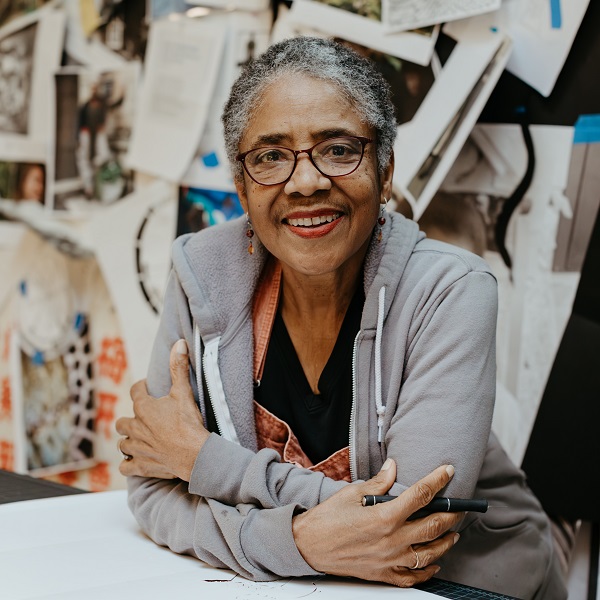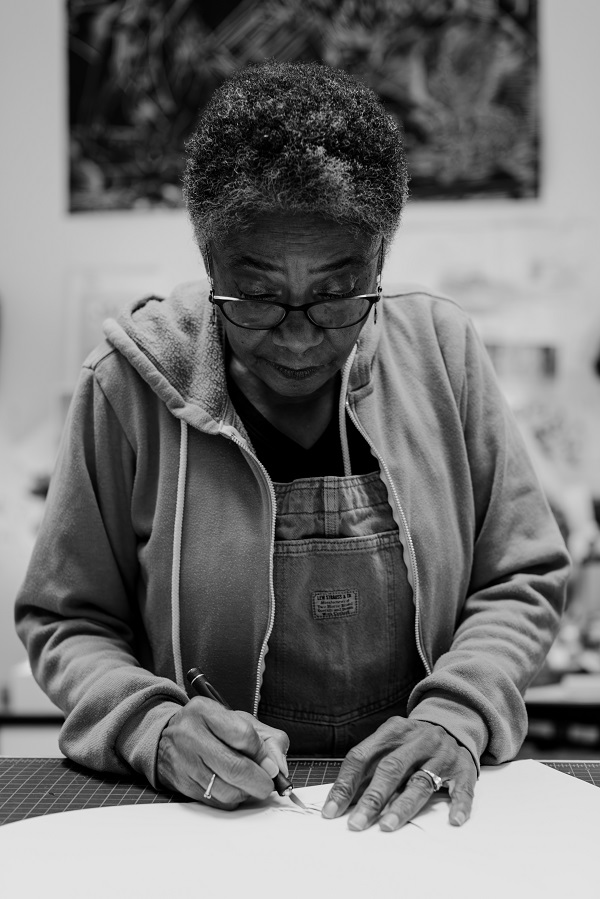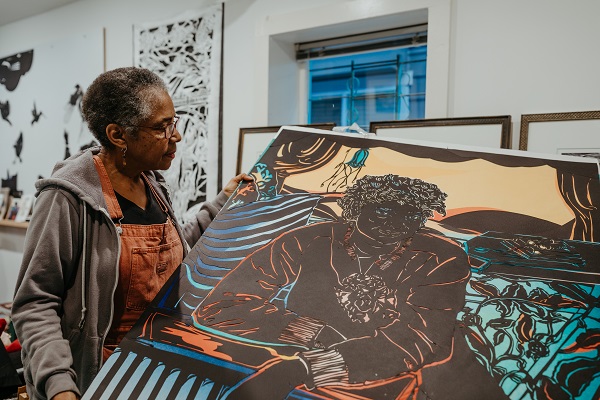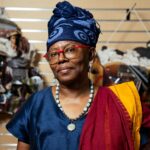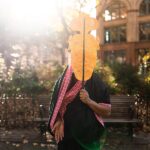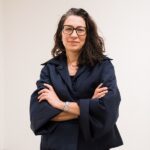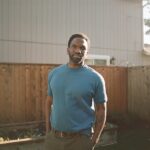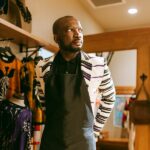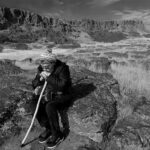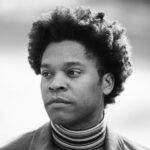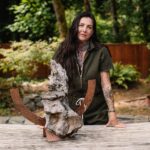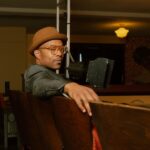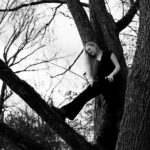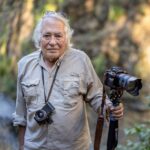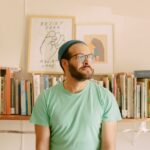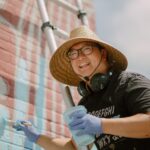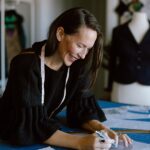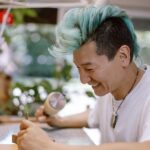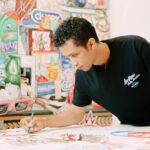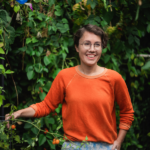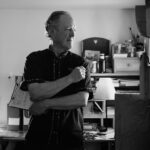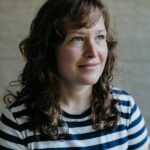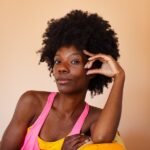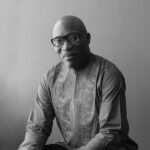Witnessing the World with Wonder
Written by Anne Liu Kellor; Photographed by Alyssa Teuton
Barbara Earl Thomas is an artist, a maker, a writer, and a thinker. In her nearly forty years of making art across many mediums, her work shines light upon the sublime that exists within the ordinary, and the confluences of history and mythology that exist within us all. Thomas likens herself to a crow who scavenges, closely observing the world around her and picking up the shiny pieces. Her work often creates mini-biographies of her subjects that say, “This is how I see you. You are bigger and better and shinier than you even know.”
In her 2021 solo exhibition at the Seattle Art Museum, Geography of Innocence, Thomas worked primarily with cut paper and Tyvek. Using photographs of children she knew for inspiration, she created portraits cut with a utility knife from heavy black paper—images that invoke the broad, elegant strokes one might find in printmaking. Then, Thomas blended warm reds, oranges, and yellows, with occasional accents of turquoise and Kelly green, beneath the cut-outs, so that color becomes the defining negative space and her figures become illuminated, transcendent, glowing from within.
Thomas’ aim was, in part, to explore the way that Black children are so often seen as less innocent than their peers. In a world with so much life lost too young to racial and gun violence, she wanted to focus on the living—to evoke the vulnerability and joy inherent in young people’s beings: a boy proudly holding his first library card and satchel of books; a girl in a magnificent dress embracing her cat; two young boys with their arms around each other, smiling with delight.
In some pieces, elaborate borders weave in words and images from nature—flowers, vines, a hummingbird, a dragonfly, a snake—evoking a larger story and lineage that surrounds and informs each person. The boy featured in her piece “Color Wheel” is surrounded by book titles—Black Boy, Notes of a Native Son, and Between the World and Me—as well as a ruler and an artist’s color wheel which includes the text, “adding black” and “adding white.” The boy looks openly at the viewer, his hand on top of his heart, his open, direct gaze radiating trust at the viewer.
Barbara Earl Thomas was born in Seattle to a family of Southern storytellers, sharecroppers, and fisherman. The first in her family to be born outside of the South and to go to college, Thomas studied with renowned Seattle painters, Jacob Lawrence and Michael Spafford, at the University of Washington, where she received her Master of Arts in 1977. She began her art career as a painter, working primarily with egg tempera paint. She then went on to explore printmaking and papercutting, appreciating the aesthetic challenge and elegance of working within the restraints of precise strokes and lines. Eventually she learned how to adapt her work into glass, creating cylindrical “story vessels,” blown glass vases sandblasted with imagery similar to her papercuts, with light shining through the negative spaces. Then she came full circle, bringing the feeling of glass and light to her 2-D papercut compositions. Thomas was also commissioned to produce several large-scale installations, such as a laser-cut steel panels at Portland’s Multnomah County Courthouse, and glass windscreen along a train platform in Seattle’s Judkins Park, as well as a series of stained-glass windows at Yale University—work which continues to grow her relationship to both local and far-reaching communities.
Thomas has also had a long career in the public arts: working for organizations such as the Elliott Bay Book Company; overseeing programs for Seattle’s Department of Arts and Cultural Affairs; serving as director for the Bumbershoot Festival Commission, the Northwest’s largest arts festival; and eventually working as executive director for The Northwest African American Museum of Art, until she stepped down in 2013. But despite these demanding roles, Thomas has always first and foremost been an artist, working for years in her home studio from five until late into the night after her day job, drawing inspiration from her rich Black lineage, and the broad influences she felt growing up on the Pacific Rim.

